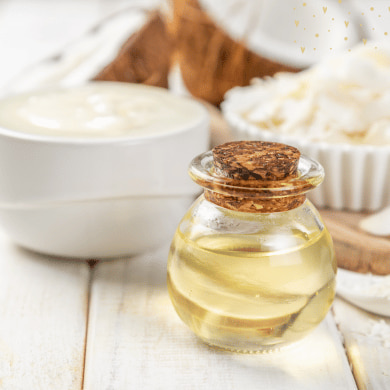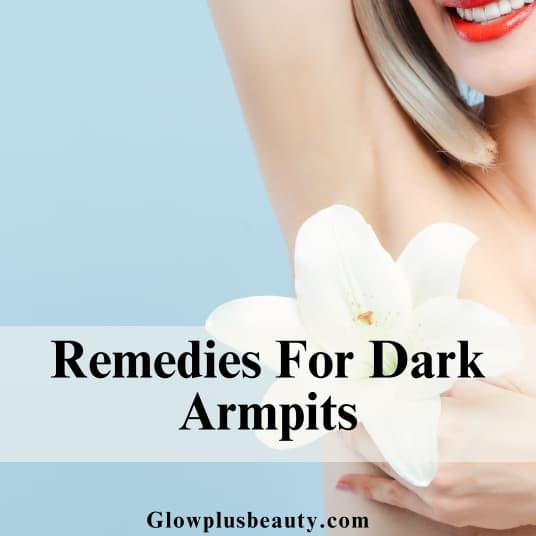Is the Rare Beauty Blush Water-Based:

Source” Rare beauty
Have you ever found yourself standing in the makeup aisle, staring at rows upon rows of blushes, wondering which one is the perfect fit for you?
With countless options available, it’s easy to feel overwhelmed, especially when trying to decipher the ingredients list.
When it comes to makeup, the base of the product can greatly influence its application, finish, and how it interacts with your skin.
Rare Beauty’s Soft Pinch Liquid Blush has garnered attention for its formula, and you might be wondering: is it water-based or silicone-based?
In this blog post, I’ll unveil the mystery behind this, let’s get started.
Related:
- Is Huda Beauty Foundation Water Based or Silicone Based?
- Is Rare Beauty Foundation Water-Based, Oil-Based or Silicone-Based?
- Is Morphe Foundation Water-Based or Silicone-Based?
- Is Maybelline Superstay Foundation Water Based or Silicone Based?
- Is NARS Foundation Water-Based or Silicone-Based?
- Is Fenty Foundation Water-Based Or Silicone-Based?
- Is L’Oreal Infallible Foundation Water-Based Or Silicone-Based?
Why Does It Matter If A Blush Is Water-Based Or Silicone-Based?
Understanding whether a blush is water-based or silicone-based can significantly impact your makeup routine and the overall look and feel of your skin.
Here’s why it matters:
- Skin Compatibility: Different skin types react differently to makeup formulations. Water-based blushes are generally more suitable for oily or acne-prone skin because they are lightweight and breathable, minimizing the risk of clogged pores or breakouts. On the other hand, silicone-based blushes are better suited for dry or mature skin as they provide hydration and help smooth out fine lines and imperfections.
- Texture and Finish: The formulation of a blush affects its texture and finish on the skin. Water-based blushes typically have a lightweight, sheer texture and provide a dewy, natural-looking finish. They blend effortlessly into the skin for a fresh, radiant glow. In contrast, silicone-based blushes have a smoother, velvety texture and offer a satin or matte finish. They provide buildable coverage and help blur imperfections for a flawless complexion.
- Longevity: The longevity of your blush depends on its formulation. Silicone-based blushes tend to be more long-lasting than water-based blushes because they create a barrier on the skin that helps lock in color and prevents fading throughout the day. If you need your blush to stay put for extended periods, especially in hot or humid weather, a silicone-based formula may be the better choice.
- Application and Blendability: The formulation of your blush can also affect how it applies and blends on the skin. Water-based blushes are typically easier to blend and build up gradually, allowing you to customize the intensity of the color. They are beginner-friendly and great for achieving a natural, effortless look. Silicone-based blushes, on the other hand, may require a bit more blending effort but offer more control over coverage and placement.
- Ingredient Preferences: For those with specific ingredient preferences or sensitivities, knowing whether a blush is water-based or silicone-based can help avoid potential skin reactions. Some people may prefer clean beauty products free from silicones, while others may prioritize ingredients that provide hydration or skin-smoothing benefits.
How do I find out if my blush is water-based or silicone-based?

Determining whether your blush is water-based or silicone-based requires a bit of detective work, but it’s not too tricky once you know what to look for.
Here’s a step-by-step guide to help you identify the formulation of your blush:
Check the Ingredients List:
To determine whether your blush is water-based or silicone-based, you can start by examining the list of ingredients on the product’s label.
Beauty products list ingredients in order of their concentration, so the first five ingredients are particularly telling.
If you see the first ingredient is water followed by water-soluble ingredients like hyaluronic acid, indicating a water-based product.
On the other hand, if your blush is silicone-based, you’ll likely find silicone derivatives such as dimethicone, cyclopentasiloxane, or other -cone or -siloxane ingredients listed toward the beginning of the ingredients list.
That means the first ingredient water doesn’t indicate the product is water-based.
Consider the Texture and Finish: While the ingredients list is the most reliable way to determine the formulation of your blush, you can also consider the texture and finish of the product.
Water-based blushes tend to have a lightweight, sheer texture and provide a dewy finish, while silicone-based blushes often feel more velvety and offer a satin or matte finish.
Consult the Brand’s Website or Customer Service: If you’re still unsure about the formulation of your blush, don’t hesitate to reach out to the brand directly.
Many companies have customer service representatives who can provide additional information about their products, including whether they’re water-based or silicone-based.
common silicone-based ingredients list:
Silicone-based makeup products typically contain ingredients that end in -cone, -siloxane, or -methicone.
- Dimethicone
- Cyclopentasiloxane
- Trimethylsiloxysilicate
- Cyclomethicone
- Dimethicone Crosspolymer
- Phenyl Trimethicone
- Silica Dimethyl Silylate
If you find the silicone derivatives in the top 5 ingredients list of the product’s label then it is likely to be a silicone-based product.
A little background about rare beauty Soft Pinch Liquid Blush Matte
The brand describes the Rare Beauty Soft Pinch Liquid Blush Matte as a weightless, long-lasting liquid blush that offers a soft, healthy flush to the cheeks.
It’s designed to blend and build effortlessly, allowing for a customizable intensity of color.
Top all of that, The product is vegan, cruelty-free, and suitable for sensitive skin.
Ingredients Analyzing:
Rare Beauty has two ranges of products, dewy & matte.
I have shown the Matte ingredients list here, you can easily determine the nature by analyzing any product’s ingredients list.
Isododecane, Silica, Dimethicone, Methyl Trimethicone, Diisostearyl Malate, Trimethylsiloxysilicate, Diphenyl Dimethicone, Mica, Cera Microcristallina/Microcrystalline Wax/Cire Microcrystalline, Silica Silylate, Disteardimonium Hectorite, C30-45 Alkyl Dimethicone, Dimethicone/Vinyl Dimethicone Crosspolymer, Sorbitan Isostearate, Propylene Carbonate, Phenoxyethanol, Caprylyl Glycol, 1,2-Hexanediol, Propanediol, Helianthus Annuus (Sunflower) Seed Oil, Illicium Verum (Anise) Fruit Extract, Gardenia Florida Fruit Extract, Nelumbo Nucifera (Sacred Lotus) Flower Extract, Nymphaea Odorata Root Extract
May Contain: Titanium Dioxide (Ci 77891), Red 28 Lake (Ci 45410), Yellow 6 Lake (Ci 15985), Iron Oxides (Ci 77491),Iron Oxides (Ci 77499), Red 7 Lake (Ci 15850)
Source here
As you can see the third ingredient is dimethicone, which is a member of the silicone family.
Now the question arises,
Is rare beauty blush water-based or silicone-based?
Yes, Rare beauty blush is silicone-based.
According to the above ingredient lists, the formula contains several types of silicones like Dimethicone and Trimethylsiloxysilicate, which are common in silicone-based makeup products.
So, the answer is silicone-based.
What does The brand say?
Rare Beauty has not made an official statement specifically addressing the formulation of their blushes in terms of being silicone-based or water-based.
However, based on the ingredient analysis of their Soft Pinch Liquid Blush, it is evident that the product is silicone-based.
Who Needs Water-Based Blushes and Who Needs Silicone-Based Blushes?
Now that we’ve deciphered the formula, you might be wondering which type of blush is best suited for your skin type and preferences.
Let’s break it down:
- Water-Based Blushes: Ideal for those with oily or acne-prone skin, water-based blushes provide a lightweight, breathable formula that won’t clog pores or exacerbate breakouts. They’re also perfect for achieving a natural, sheer flush of color.
- Silicone-Based Blushes: If you have dry or mature skin, silicone-based blushes offer a hydrating, long-lasting formula that glides effortlessly onto the skin, blurring imperfections and providing a soft-focus effect. They’re also great for those who prefer buildable coverage and a satin finish.
Pros and Cons: Weighing Your Options
Like any beauty product, water-based and silicone-based blushes each have their own set of pros and cons:
Water-Based Blushes:
Pros:
- Lightweight formula
- Breathable and non-comedogenic
- Ideal for oily or acne-prone skin
Cons:
- May require more frequent touch-ups
- Less long-lasting compared to silicone-based formulas
Silicone-Based Blushes:
Pros:
- Hydrating and long-lasting
- Blurs imperfections for a smooth finish
- Suitable for dry or mature skin
Cons:
- Can feel heavier on the skin
- May not be suitable for those with silicone sensitivities
Conclusion: Is the Rare Beauty Blush Water-Based or Silicone-Based?
After examining the ingredients list and formulation of Rare Beauty blushes, it’s evident that they lean towards being silicone-based rather than water-based.
With key ingredients like dimethicone, these blushes offer a smooth, velvety texture that glides effortlessly onto the skin, providing a long-lasting and flawless finish.
I hope you find your answer.
Share this post with your friends and start a conversation about the transformative power of choosing the right products for your skin.



